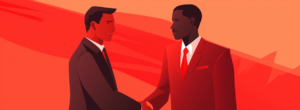How Dell scaled people analytics across the full employee lifecycle
- 5 Min Read
“It also helps with staying grounded in the people aspect of people analytics. To start with employee engagement or satisfaction. To start with what people are feeling and what they believe.”
- Author: Benjamin Broomfield
- Date published: Mar 29, 2023
- Categories

Podcast: Play in new window | Download
Subscribe: RSS
In a previous episode of the HRD Live Podcast, Richard Rosenow described people analytics as employee listening at scale. Our latest guest, Stephanie Murphy, Talent Analytics Director at Dell, shares this viewpoint and argues we can apply people analytics to each stage of the employee lifecycle by beginning with employee listening.
This approach breaks down siloes between recruitment, onboarding, development, retention, and exit. Pulling insights from each stage through careful listening builds a narrative richer than the sum of its parts. Murphy shares her insights on collating clean employee listening data, how HR can scale these insights to impact the full employee lifecycle, and Dell’s progress to date.
Begin with employee listening to address the full employee lifecycle
Applying people analytics practices to the full employee lifecycle can be a daunting prospect. But at its heart, it’s simply another form of employee listening. Murphy argues this is the best place to start.
“It also helps with staying grounded in the people aspect of people analytics. To start with employee engagement or satisfaction. To start with what people are feeling and what they believe.”
With this grounding in your people and their experience, it becomes easier to add in what Murphy calls ‘hard data,’ such as numbers from HR systems. As with any change management model, starting with quick wins can help secure greater buy-in. Employee listening through surveys and other feedback methods is a ‘softer’ approach that can quickly bring stakeholders onside. Murphy goes on to discuss how this ‘hard data’ can tie in with employee listening insights.
“If you look at recruitment data or candidate data, what was their experience? If you look at DE&I data, what are the different pockets? We had low diversity in one part of the organization. Merging that in with the employee listening to see what they said in the survey, we looked at the people that had left the company in the past year and what were they saying to us through surveys. The surveys of sentiment are at the heart of it and feed into all the different pieces of the employee lifecycle. That’s how you start seeing a full story start to form.”
Keeping data healthy
Clean, consistent, and healthy data is the lifeblood of any healthy people analytics program. But, especially for global organizations that operate in different markets, countries, and contexts, and under different legalities and regulations, the story becomes complex.
“We get all this data, we collect it in different ways, across different systems and different platforms. It’s just about trying to be as consistent as possible. Even things that simple like wording and naming. The key is to have consistent nomenclature, and make sure people are calculating things the same way.”
“One of the things we noticed was that we were looking at generation brackets differently. We were cutting off millennials at a certain year and someone else in the organization was cutting it off at a different year. When we tried to merge the data or compare the two, we were looking at different generation brackets.”
To establish consistency, Murphy recommends a ‘data dictionary.’ All those who are working across data within the organization can rely on this to ensure consistent definitions. Beyond this, consistently scrub data and look for consistencies. This can help leaders trust data to inform actions across the employee lifecycle.
Solving long-term future of work challenges across the employee lifecycle
Data insights and predictive analytics can give a clearer picture of future challenges. But some events and trends cannot be predicted. However, a healthy people analytics program informed by employee listening can help give organizations the agility to adjust to fresh challenges.
“Build systems that allow you to easily adjust and prepare. There are always going to be things that pop up. If you design your system where you’re ready for curveballs, it’s much easier to adjust to the monkey wrenches that are going to come your way.”
By starting with employee listening and scaling people analytics across the full employee lifecycle, HR teams will have a broader picture and understanding of their people. This better prepares leaders to adapt with the next ChatGPT, ‘quiet quitting,’ or future emerging trend.
Timestamps
00:18 – Introduction
01:05 – How can people analytics be used at each stage of the classic employee journey?
02:23 – For organizations in the early stage of their people analytics journey, this may feel a little daunting. How should such organizations begin to scale their people analytics strategy and are there any parts of the lifecycle to focus on first?
03:47 – How does applying people analytics to the whole employee lifecycle give a picture that is greater than the sum of its parts?
04:50 – What practices have you learned from employee listening that you’ve scaled to the employee life cycle?
07:27 – What are some of the most important data sources for employee listening?
09:01 – What best practices are there for ensuring the data collected is clean and healthy?
10:45 – What relationships do HR or People Analytics Leaders need to build to scale people analytics to this level?
13:20 – Can you talk us through your people analytics journey and the biggest lessons you have learned?
16:47 – Why is this approach to people analytics a long-term strategy that can help HR teams prepare for the future?








